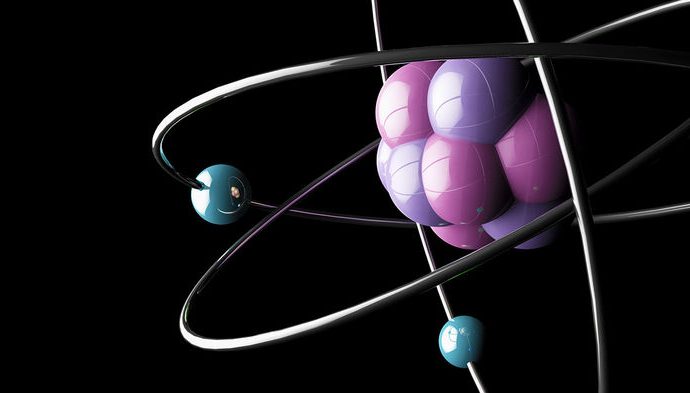You can’t weigh the universe’s smallest particles on a bathroom scale. But in a clever new experiment, physicists have found that one such particle—the proton—is lighter than previously thought.
“It’s a significant improvement on the mass of the proton,” says Edmund Myers, a physicist at Florida State University in Tallahassee who wasn’t involved with the work. “I can’t see any holes in what they’ve done. They’ve done a good job.”
The tiny, positively charged particles known as protons are everywhere. They inhabit the center of every atom and make up most of the sun and other stars. They’re so light—just billionths of a billionth of a billionth of a kilogram—that they can’t be weighed by ordinary means. But in recent decades, physicists have combined strong electric and magnetic fields in a device called a Penning trap to measure the proton’s mass more and more precisely. In these experiments, electric and magnetic fields trap the proton while the magnetic field forces it to move in a circle. While it rotates, the proton will vibrate, or oscillate, at a frequency that’s related to its mass. Researchers can calculate the proton’s mass by measuring this frequency, and comparing it to that of a reference—typically, the nucleus of a carbon-12 atom, which is defined as 12 atomic mass units.
But no experiment is perfect. Magnetic fields vary in time and space, causing small measurement errors. To reduce the impact of these fluctuations, a group of physicists working in Mainz, Germany, loaded the carbon nucleus and the proton into separate storage traps, then shuttled them quickly into and out of the measurement trap. Although swapping the nucleus and the proton required more than 30 minutes in previous experiments, the German group needed only about 3 minutes—limiting the chances for errors to accumulate. The team also added more motion detectors to their setup, leading to a measurement with an overall precision of 32 parts per trillion.
The researchers found the mass to be 1.007276466583 atomic mass units. That’s roughly 30 billionths of a percent lower than the average value from past experiments—a seemingly tiny difference that is actually significant by three standard deviations, the team reports this week in Physical Review Letters. (By comparison, scientists typically consider two standard deviations enough for an experimental result to be statistically significant.)
Sven Sturm, a physicist at the Max Planck Institute for Nuclear Physics in Heidelberg, Germany, and the group’s leader, is not sure why other researchers measured such higher masses, but he suspects hidden sources of error. He adds, however, that his team’s result agrees better than previous ones with recent measurements of the mass of the helium-3 atom, which is made of two protons and one neutron.
The German team now plans to further ratchet up precision by measuring the proton and the carbon ion simultaneously in separate traps, which would eliminate uncertainty due to magnetic field fluctuations. One group member will also attempt to weigh the antiproton—the proton’s negatively charged doppelganger. Even a tiny difference between the proton’s and antiproton’s masses could help explain why the universe we see is made of matter, and antimatter is exceedingly rare.
Sturm also wants other research groups to make independent measurements, to ensure that his team’s results don’t suffer from some hidden error. (The two main groups providing previous measurements are no longer active.) “I would be really happy to see more groups doing measurements at this level of precision, so we can really compare values and find, hopefully, that they’re consistent,” he says.
Source: Science Magazine

































Leave a Comment
You must be logged in to post a comment.